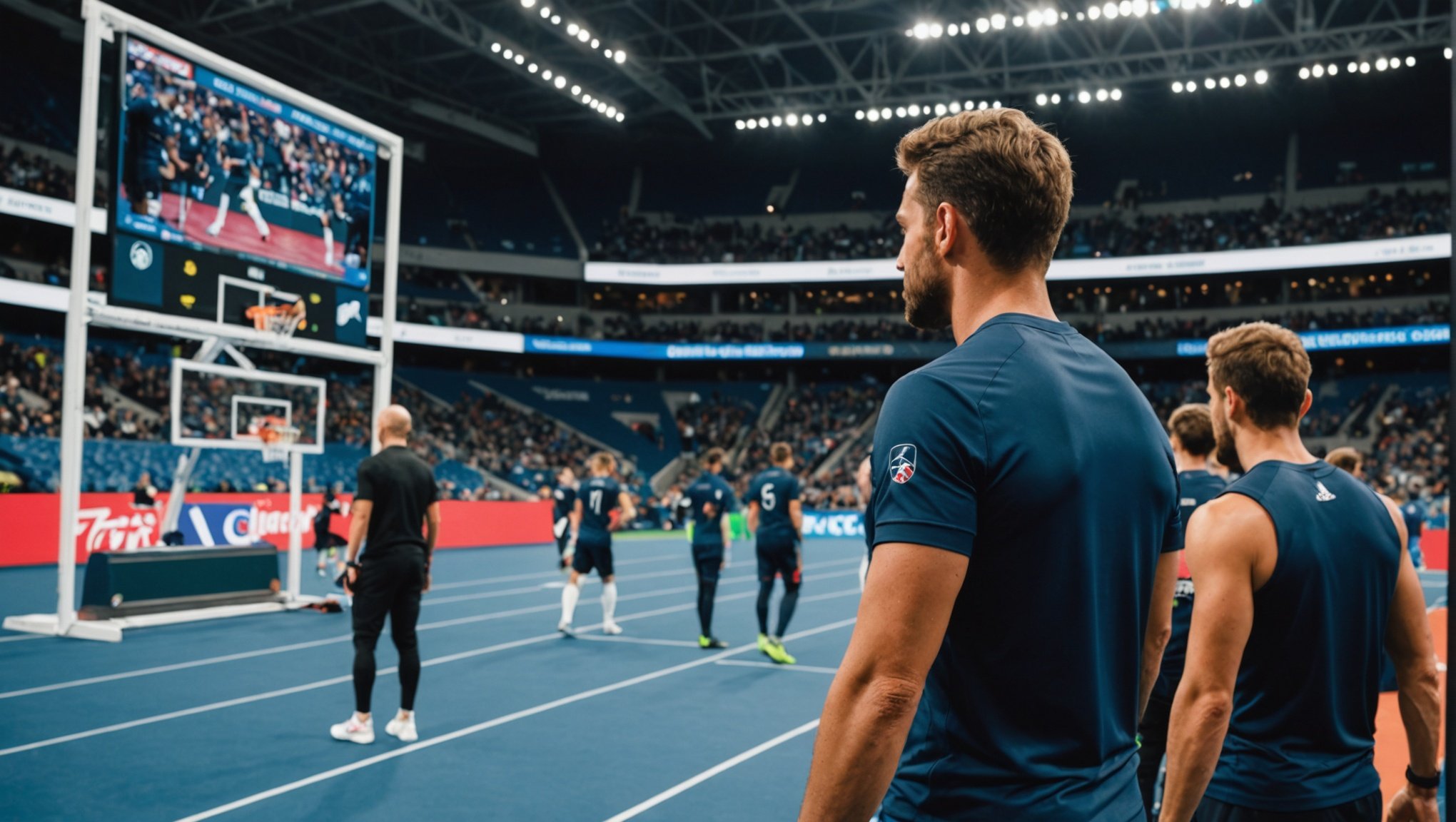Introduction to Augmented Reality in Sports Coaching
Augmented Reality (AR) is transforming how sports coaching is conducted by overlaying digital information onto the real world. This technology enhances the physical environment through immersive experiences, aiding coaches and athletes. In the realm of sports coaching, AR provides an interface where virtual simulations and training scenarios can be presented alongside real-world interactions. This allows for more engaging and effective coaching sessions.
Historically, the development of AR technologies in sports coaching has undergone significant advancements. Early integrations focused on rudimentary overlays or simple data projections. However, today’s technology has exponentially refined these applications, aligning closely with athlete training regimens and game strategies. As AR technology has evolved, so too has its potential to deliver unprecedented insights into athlete performance and strategy synchronization.
In the same genre : Mastering video creation: the ultimate commercial maker guide
In recent years, technology innovations in AR have led to more sophisticated applications within sports. Current trends include real-time data integration and interactive training programs. By utilising augmented reality, coaches can facilitate dynamic learning and enhance performance analytics. This results in a more comprehensive understanding of both player development and competitive advantage. As AR continues to develop, its role in sports coaching promises to be increasingly pivotal and transformative, offering solutions that align technological advancement with athlete progress.
Benefits of Augmented Reality for Coaches
Augmented Reality (AR) is transforming how coaches and athletes approach training and performance. One of the principal benefits of Augmented Reality is the enhancement of coaching efficiency. AR tools offer improved real-time performance analysis, allowing coaches to assess athletes’ movements and strategies as they unfold. This immediate access to performance data aids in making swift and informed decisions, ultimately optimising training outcomes.
In the same genre : Discover unforgettable mystery box experiences in italy
Enhanced feedback mechanisms are another significant benefit. AR platforms provide visual overlays and real-time metrics that enable precise and comprehensive feedback. This detailed insight empowers coaching staff to communicate effectively with athletes, facilitating a deeper understanding of areas requiring improvement.
Moreover, the role of AR in developing tailored training programs cannot be overstated. By utilising data obtained through AR, coaches can create bespoke training regimens that address specific strengths and weaknesses. This customised approach ensures that training is both relevant and challenging, promoting athlete development in targeted areas.
In summary, the integration of Augmented Reality into coaching practices not only elevates the skill development process but also enhances overall training efficiency and effectiveness. This technology is revolutionising the sports arena by bridging the gap between performance data and actionable insights.
Benefits of Augmented Reality for Athletes
Augmented Reality (AR) is revolutionising the way athletes approach training enhancement and athlete performance improvement. One notable advantage is the significant boost in motivation and engagement AR provides. By creating immersive and dynamic training environments, athletes find themselves more invested in their routines, which actively contributes to performance betterment.
The visual learning capabilities of AR play a crucial role in this transformation. By overlaying virtual instructions onto physical actions, AR assists in developing muscle memory and skill acquisition more efficiently. This approach allows athletes to receive real-time feedback, identifying and correcting errors instantly, thereby refining their techniques much faster.
Moreover, compelling case studies illustrate the substantial benefits AR can offer. For instance, athletes using AR tools experience marked improvements in tactics comprehension and strategic decision-making during live scenarios. These success stories not only exemplify enhanced training results but also highlight the practical application of AR in increasing overall athletic performance.
Implementing AR in an athlete’s training regimen translates into an interactive, engaging, and visually informative experience. Consequently, the integration of these advanced technologies continues to aid athletes in refining their skills, maximising performance, and achieving their sporting objectives with unparalleled precision.
Successful Implementations of Augmented Reality in Sports
Augmented Reality (AR) is revolutionising how athletes train and perform in real-time, introducing unprecedented levels of sports technology. As AR continues to advance, it brings a plethora of innovative applications across various sports.
Case Study: Football Training with AR
Football teams are leveraging AR to enhance training sessions, offering real-time applications that simulate game scenarios. This technology enables players to experience complex match situations in a controlled environment. Coaches use AR to overlay tactical layouts directly onto the field, providing athletes with instant feedback on their position and movements.
Case Study: Basketball Skill Development
Basketball players are benefiting from AR solutions that refine their skills. By integrating AR with smart glasses, athletes receive live shooting stats and improvement tips as they practice. This integration of sports technology not only helps in honing technique but also in building confidence through immediate results and insights.
Case Study: Injury Rehabilitation and Prevention
AR is playing a pivotal role in injury rehabilitation and prevention. Through detailed visualisations, athletes can follow prescribed physiotherapy routines accurately, ensuring effective recovery. Additionally, AR systems highlight potential strain points, aiding in the prevention of future injuries and promoting safer training protocols.
These case studies of AR applications in sports technology underline its transformative potential, from training enhancements to injury management, fostering a new era of athletic development.
Challenges and Limitations of Augmented Reality in Sports Coaching
Augmented Reality (AR) in sports coaching presents several challenges and barriers to adoption. One primary concern is the technological limitations that AR systems face. For AR to function optimally, a robust infrastructure that supports high-speed data transfer and seamless integration is essential. This infrastructure often requires significant investment in hardware and software, which may not be feasible for many sports organizations.
Another barrier is the resistance to change from traditional coaching methods. Coaches who have developed their techniques over years may be reluctant to embrace new technologies. The apprehension stems from a fear of losing the human element in coaching, which many view as irreplaceable. This entrenched mindset can impede the adoption of AR in sports contexts.
The high cost associated with AR systems further compounds these issues. AR technology is expensive, with costs extending beyond the initial hardware to include ongoing updates and maintenance. As such, accessibility becomes a significant concern for smaller or less-funded sports organizations that may struggle to justify these expenditures.
To overcome these barriers, it is crucial to address the technological limitations, provide education on AR’s benefits, and develop cost-effective solutions tailored to the needs of diverse sports organizations.
Future Trends in Augmented Reality for Sports Coaching
As we look to the future of AR in sports, innovation is set to play a transformative role. With technological advancements, AR will continue to evolve rapidly, reshaping coaching methodologies and enhancing athlete performance.
One prediction for AR’s future is the seamless integration of AI. This combination could provide coaches with real-time analytics, offering deep insights into player movements and strategies. AI-driven technological advancements may lead to personalised training regimens, dynamically adjusting based on an athlete’s progress.
Emerging platforms are also critical in the future of AR. New tools, possibly wearable, could capture comprehensive data on performance metrics. These platforms might offer interactive experiences, allowing for virtual coaching and global connectivity.
Furthermore, sports innovation will likely see AR-enhanced equipment, such as goggles or visors, enabling athletes to visualise game strategies and outcomes during practices. This advancement could lead to more immersive and efficient training sessions.
• Predictions indicate AI integration with AR, enriching the coaching process.
• Emerging platforms will create interactive and personalised training.
• AR-enhanced equipment could revolutionise how strategies are developed and executed.
By embracing these technological advancements, the future of sports training holds immense potential for both coaches and athletes, driving the industry towards sports innovation.
Conclusion and Final Thoughts
Augmented Reality (AR) has undeniably transformed the landscape of sports coaching. By overlaying digital information onto the real world, AR in sports coaching offers novel ways to enhance training and improve performance. This technology has progressed beyond simple visual aids, redefining how coaches and athletes interact with training data.
The future developments in AR promise even more sophisticated tools, opening up possibilities for immersive and interactive coaching scenarios. With advancements in AR glasses and mobile apps, athletes can experience real-time feedback that can be crucial for instant performance adjustments. The potential for coaching evolution is significant as these technologies become more integrated into routine practices.
For coaches and athletes, embracing these advancements is key. Adopting AR technologies is not merely about keeping up with trends—it’s about unlocking new dimensions of training efficiency and strategic insights. As these tools become more refined, they provide opportunities to gain competitive edges in performance through data-driven techniques.
In conclusion, the integration of AR into sports coaching is a promising progression that holds the potential to elevate coaching practices. As we look to the future, welcoming these innovations can substantially enrich the coaching experience, benefitting both coaches and athletes alike.











